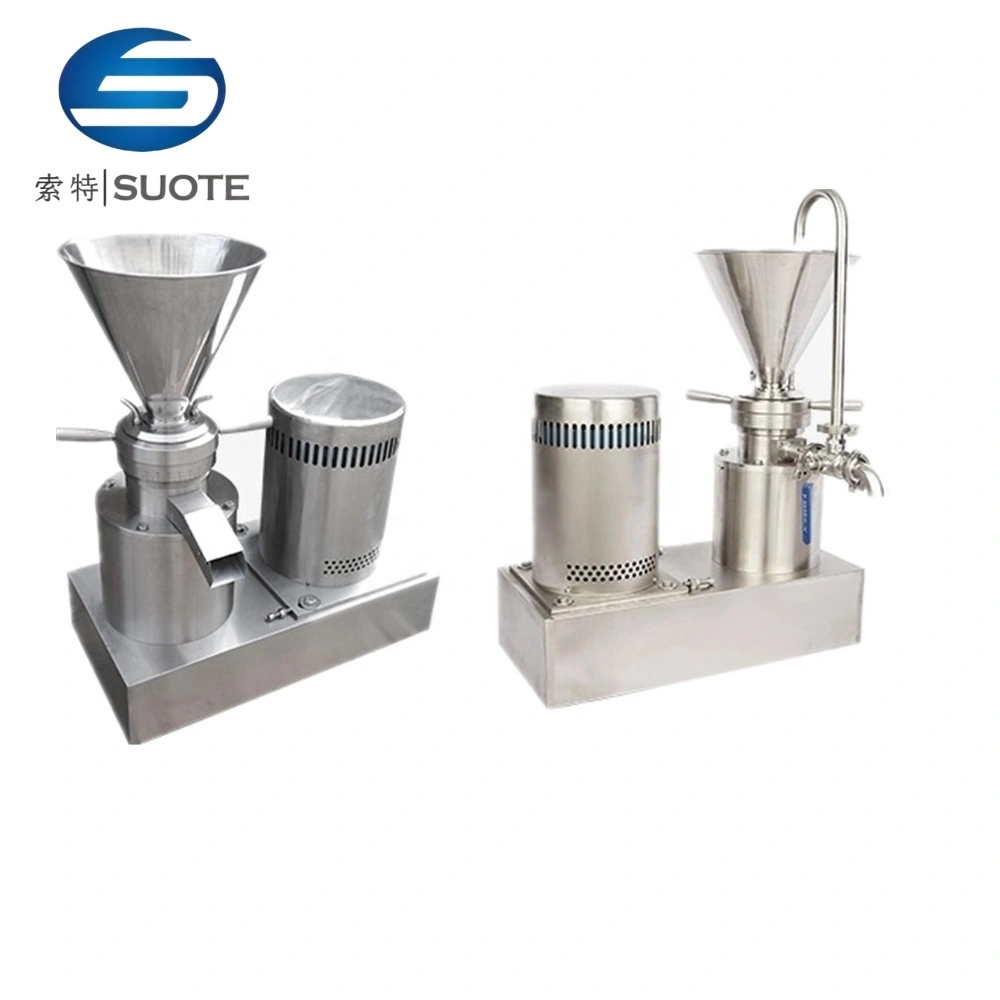Stainless Steel Fractional Colloid Mill Food Grade
The working principle of split colloidal grinding is based on the processing of the material between the fixed and moving teeth. When the material enters the equipment in a fluid or semi-fluid state, it will experience the effect of strong shear force, friction force and high-frequency vibration. These forces act together, so that the material can be effectively crushed, emulsified, homogeneous and mixed, and finally produce fine and uniform products.
Design feature
◆ Separate design: the motor and mill of the split colloidal mill are separate. This design makes the equipment more convenient for maintenance and cleaning. Meanwhile, it also improves the stability of the equipment and the service life of the motor.
◆ Main components: split type colloidal grinding is mainly composed of stainless steel or semi-stainless steel colloidal grinding, including shell, stator, rotor, regulating mechanism, cooling
mechanism, motor and other parts. Its main parts are made of corrosion-resistant, non-toxic materials to ensure the safety and hygiene of products.
◆ Adjustment mechanism: the equipment is equipped with a regulating mechanism. Through the adjustment of fixed teeth and moving teeth, the processing strength of materials can be
flexibly controlled to meet different materials and production requirements.
Introduction to Rubber Grinding Body Parts
Merit
High efficiency: Split colloidal grinding can treat materials efficiently and improve production efficiency.
Accuracy: Through the adjustment mechanism can accurately control the material processing strength in the processing process, to ensure the product quality.
Easy maintenance: The discrete design makes the equipment more convenient for maintenance and cleaning.
Stability: The separate design of the motor and the mill body improves the
stability of the equipment and extends the service life.
Product parameters
| Model | JML-50 | JML-80 | JML-100 | JML-120 | JMF-80 | JMF-100 | JMF-120 | ||
| Emulsification fineness um (single cycle or multi-cycle) |
5~40 | 3~40 | 2~40 | 2~40 | 3~40 | 2~40 | 2~40 | ||
| Adjustment range mm | 1-0.01 | 1-0.01 | 1-0.01 | 1-0.01 | 1-0.01 | 1-0.01 | 1-0.01 | ||
| Output t/h change according to materials | 0.01-0.2 | 0.3-1 | 0.5-2 | 0.7-3 | 0.3-1 | 0.5-2 | 0.7-3 | ||
| Motor | Power kw | 1.1 | 3 | 5.5 | 7.5 | 4 | 5.5 | 7.5 | |
| Pressurev | 380 | 380 | 380 | 380 | 380 | 380 | 380 | ||
| Stirring speed r/min |
2880 | 2880 | 2880 | 2880 | 2880 | 2880 | 2880 | ||
| Grinding diameter mm | $50 | $80 | $100 | $120 | 80 | $100 | $120 | ||
| Discharge port diameter(hour) | $15 | $25 | $32 | $40 | 625 | 632 | 640 | ||
| Cooling water pipe(hour) | $1/8" | 61/4" | Φ1/4" | 61/4" | Φ1/4" | Φ1/4" | Φ1/4" | ||
| Dimensions | Length mm | 420 | 520 | 560 | 560 | 640 | 750 | 750 | |
| Width mm | 280 | 400 | 420 | 420 | 550 | 620 | 620 | ||
| Height mm | 760 | 900 | 950 | 950 | 1030 | 1080 | 1080 | ||
| Weight kg | 45 | 84 | 113 | 135 | 210 | 275 | 295 | ||
Applied range
Split colloidal grinding is widely used, including but not limited to the following fields
product display






